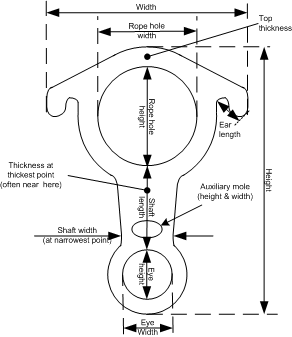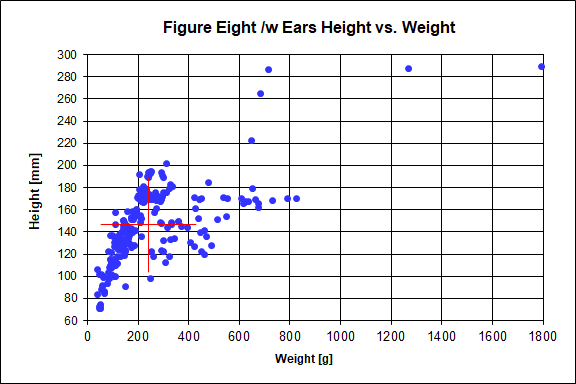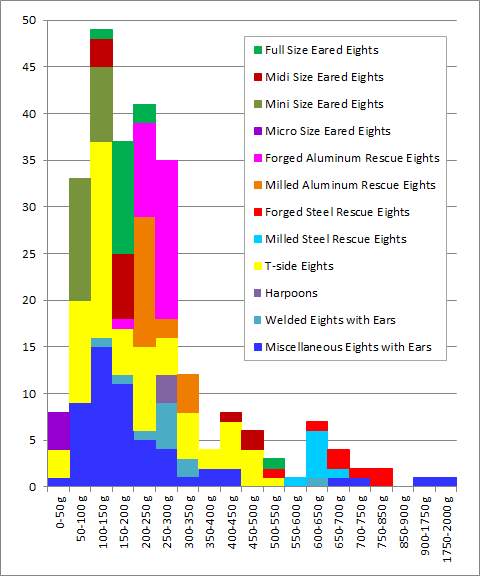 Figure
eights with ears have more to describe than their deaf
cousins, so after expanding those descriptions, doing the
same for the eights with ears was straightforward. I chose to
take the same approach that I took for the deaf
eights; namely, differentiate by measurement. I measured the
following dimensions for each eared eight in my collection:
Figure
eights with ears have more to describe than their deaf
cousins, so after expanding those descriptions, doing the
same for the eights with ears was straightforward. I chose to
take the same approach that I took for the deaf
eights; namely, differentiate by measurement. I measured the
following dimensions for each eared eight in my collection:
- Height
- Width
- Thickness (maximum)
- Rope hole height
- Rope hole width
- Top thickness
- Shaft length
- Shaft width (minimum)
- Eye height
- Eye width.
- Auxiliary hole height (if present)
- Auxiliary hole width (if present)
- Length of primary or top ear.
- Length of secondary or bottom ear.
The total thickness includes the effect of any bends. In other
words, if you sandwich the eight between two parallel boards that
are also parallel to the plane defined by the length and width
dimensions, the thickness is how far apart the boards must
be. Since some figure eights with ears have unique features, I
used some judgement in deciding what the last four dimensions
referred to. In most cases, you should easily be able to decide
what measurements I made.
As the following chart shows, there are two branches to the correllation between height and weight that applies well for most of my eared eights. The upper branch is for aluminum eights and the lower for steel eights. The four huge eights are Radeberger Haken, one of which is the absurdly heavy beast at the right.

I grouped my figure eights with ears into several categories
based on similarities in size, shape, material, and manufacturing
method. The previous chart shows that if you view all the eared eights
at once, they do not fall into distinct size groups. Despite this,
I was able to make reasonable groups when I looked at them in
detail. The following pages provide tables showing the following
key dimensions for each of the following categories:

For far more content, use a larger monitor and a full-width window.
Hundreds of cell phone users complained and asked me to for a simpler, mobile friendly site. In particular, they wanted me to limit each page to a small number of pictures and minimize my use of text. This new site provides what they asked for.


 Figure
eights with ears have more to describe than their
Figure
eights with ears have more to describe than their 
